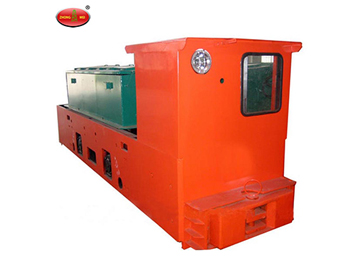What are the Common Problems with Current Resistance Speed Locomotives?
Wire-type electric locomotives are generally switched by mechanical contact components, controlling the series, parallel and speed-regulating resistors of the motor, and the parallel connection mode to adjust the voltage of the motor terminal to realize the control of the speed of the locomotive. Due to the large current change between the speeds of the various stages, the impact force of the locomotive is large and the mechanical wear is large. At the same time, there is no other protection device except the overcurrent segmentation switch in the entire locomotive line. In addition, the conditions of the mine working conditions are poor, the driver's operation is not standardized, etc., so that the following problems are common in the resistance-regulated motor locomotives:
1. Adopting step-level speed regulation: the starting current of the locomotive is large, the starting torque is small, the starting and running are not stable, and it is prone to safety accidents.
2. Due to the large current change between the speeds of the various stages, the mechanical wear of the locomotive is large, the control switch burns severely, and it is replaced almost every day.
3. The voltage and current protection circuits are incomplete, without overvoltage, undervoltage and overcurrent protection. When the locomotive motor fails, it is impossible to limit the sudden change of the current, and it is easy to cause the DC pull. Not only does it burn out the contact group in the controller, but it is also easy to cause personal injury accidents due to the arcing fire.
4. Energy waste, the energy lost by the speed control resistor heat is completely a waste.
5. It can not protect the motor, once the motor is over current, only the motor is burned.
6. The damage caused by the unsteady start to the mechanical transmission system is also unavoidable.
